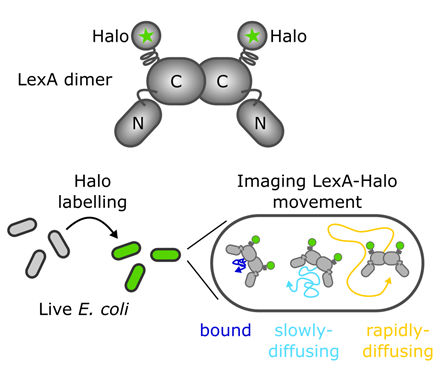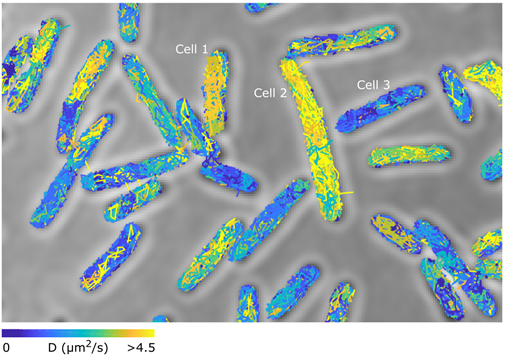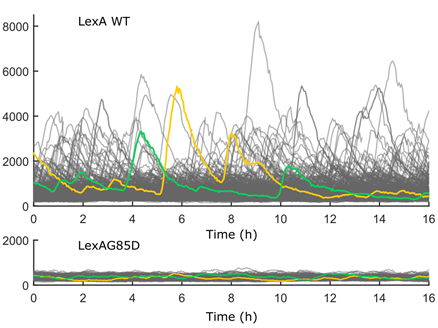We are excited to share our latest work on LexA and how it regulates the SOS response, now available https://www.biorxiv.org/content/10.1101/2020.07.07.191791v1.full. A novel #singlemolecule tracking approach allowed us to gain new insight into this classic DNA damage response. Continue reading for an overview
The SOS response controls an array of mechanisms that allow bacteria to survive and adapt to stress conditions, including DNA repair, mutagenesis, horizontal gene transfer, antibiotic persistence, and the induction of toxins, virulence factors, and prophages. (2/7)
Single-molecule tracking of a LexA-Halo fusion in live E. coli cells allowed us to visualise key mechanisms by which DNA-binding and degradation of the LexA repressor regulates the SOS response in vivo. (3/7)
We were surprised that degradation of LexA occurs frequently during unperturbed growth and causes substantial heterogeneity in LexA abundances across cells. (4/7)
Does LexA variability jeopardise tight repression of the SOS response? Using microfluidics and simultaneous imaging of LexA degradation and target gene expression, we were able to connect how heterogeneity in the SOS output relates to the underlying input from LexA. (5/7)
We found that spontaneous LexA degradation underlies SOS gene expression heterogeneity and triggers spontaneous SOS pulses even during growth in optimal conditions. (6/7)
Our findings show that LexA achieves a remarkable balance as a master gene regulator, ensuring reliable control of the SOS response, while also generating gene expression variability that enhances stress survival of isogenic bacterial populations. (7/7)

 Read on Twitter
Read on Twitter




